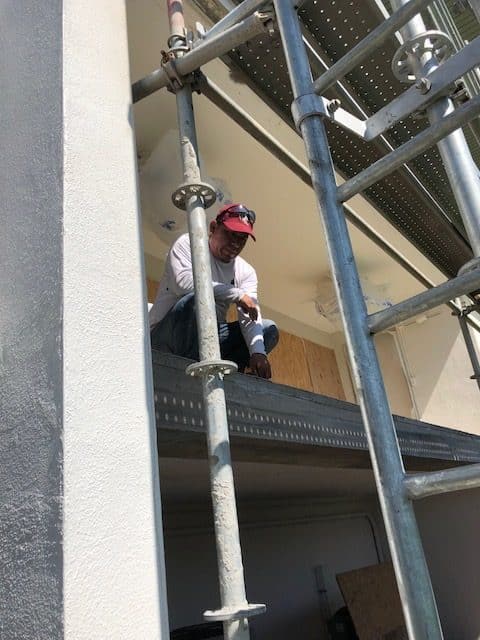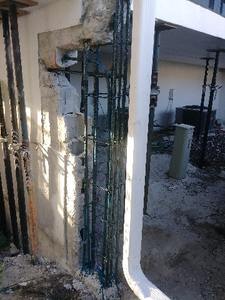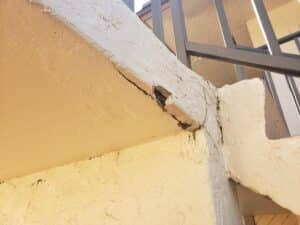Water damage can be a silent adversary to any structure, slowly compromising the integrity and safety of a building. At McLeod’s Contracting Solutions, we understand the critical role that proper sealant application plays in shielding properties from moisture intrusion. Ensuring that every crevice and crack is expertly sealed not only maintains the structural longevity of buildings but also helps in preserving their aesthetic appeal over time.
The task of selecting and applying the right sealant might seem simple, yet it requires careful consideration based on the type of material and the specific environmental conditions of the area. Our expertise guides property owners through the nuances of this essential maintenance step, helping them choose options that provide durable and effective barriers against water penetration. By focusing on high-quality sealants that are best suited for each unique situation, we ensure that buildings remain dry, safe, and visually pleasing.
Understanding the Role of Sealants in Water Damage Prevention
Sealants are essential in safeguarding building structures from water damage, a role we take seriously. By creating a waterproof barrier, sealants prevent water and moisture from penetrating surfaces which can lead to costly damage including mold, mildew, and structural weakening. Specifically for areas exposed to significant weather changes, such as roofs, windows, doors, and joints, the right sealant provides a critical defense line that keeps these elements tightly sealed against the ingress of water.
Furthermore, the effectiveness of sealants also plays a significant role in energy conservation. By sealing gaps and cracks, they help maintain the interior climate, reducing the load on heating and cooling systems and, consequently, lowering energy costs. It’s not just about protection—it’s also about ensuring efficiency and sustainability in the buildings we care for.
Choosing the Right Sealants for Different Materials
Selecting the correct sealant is critical for both performance and durability, which is why we consider the material and environmental factors when advising on or applying these products. There are several types of sealants available, each suited to different materials and conditions. For exterior surfaces such as bricks and masonry, we often recommend silicone-based sealants because of their flexibility and UV resistance. Acrylic sealants, on the other hand, are suitable for indoor use on surfaces like drywall and wood, offering paintability and less odor.
Understanding the chemistry of the sealant in relation to the material it is applied to is crucial. For instance, polyurethane sealants are excellent for joints that experience significant movement due to their ability to expand and contract without losing adhesion. Each type of sealant has its specific application technique and cure time, which we meticulously follow to ensure the best results. Our team is trained to identify not just the ideal type of sealant, but also the most effective application process for each unique situation, ensuring longevity and effectiveness in protecting your property.
Step-by-Step Application Process for Effective Sealing
For us, ensuring that every sealant application is done correctly is crucial. The process requires precision and care to achieve the best results. Initially, the surface must be properly prepared by cleaning it thoroughly to remove all dirt, grease, and existing flaky sealant. This guarantees that the new sealant adheres well and forms a tight bond.
The application begins by cutting the tip of the sealant tube to match the size of the gap being sealed. Using a caulking gun, we apply the sealant evenly along the seam, ensuring there are no gaps or bubbles. For larger joints, backing material like foam backer rod is inserted before applying the sealant to prevent excessive use of the product and to provide a support structure for the sealant. After application, the sealant is smoothed out with a tool or a gloved finger, which not only ensures a good seal but also gives a neat, professional finish. The sealant then needs the appropriate cure time to fully set, which can vary depending on the type and brand.
Routine Checks and Maintenance Tips for Sealant Longevity
To ensure the longevity of sealants, routine checks and maintenance are essential. We recommend inspecting sealants at least twice a year. These inspections are particularly important before and after severe weather seasons, as extreme temperatures and moisture are likely to impact the efficacy of the sealant.
During these checks, we look for signs of cracking, peeling, or gaps where the sealant may have lost its adhesion. If damage is noted, it is crucial to address it promptly to prevent water ingress and the potential subsequent damage. Maintenance might include cleaning the sealed areas with mild soap and water to remove dirt and debris, which can degrade the sealant over time. If repair or reapplication is needed, the old sealant should be completely removed and the surface cleaned before applying the new sealant.
Conclusion
Effectively sealing surfaces is vital for protecting structures from elements and extending their lifespan. At McLeod’s Contracting Solutions, we pride ourselves on using best practices in every project—from selecting the right materials to applying them meticulously. Remember, proper application and regular maintenance of sealants not only preserve your building’s integrity but also enhance its aesthetic value. If you’re looking for expert sealing solutions or need advice on maintaining your property’s sealant applications, don’t hesitate to contact us. Let McLeod’s Contracting Solutions help you protect your investment with reliable concrete sealing services.







